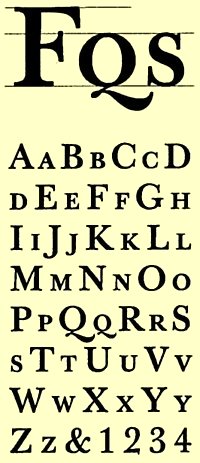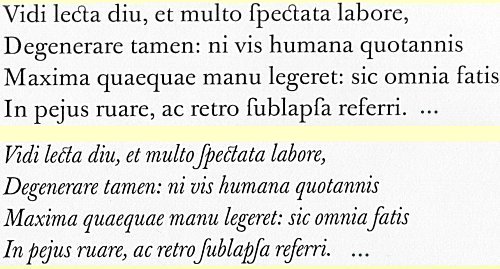John Baskerville
Today, the hound and the Baskerville. The University of Houston's College of Engineering presents this series about the machines that make our civilization run, and the people whose ingenuity created them.
 The English engraver John Baskerville was born in 1706. At seventeen, he was engraving tombstones. By the time he was twenty, he was teaching writing and bookkeeping and running an engraving business as well. At thirty-two, he took up the then-popular lacquering process that we call japanning, and that made him wealthy.
The English engraver John Baskerville was born in 1706. At seventeen, he was engraving tombstones. By the time he was twenty, he was teaching writing and bookkeeping and running an engraving business as well. At thirty-two, he took up the then-popular lacquering process that we call japanning, and that made him wealthy.
Baskerville was an early mentor to Matthew Boulton, who built Watt's steam engines. He was also a good friend of Benjamin Franklin, who visited him from time to time.
Baskerville was forty-four when he took up the business for which he's known today. He applied his uncommon engraving skill to printing and typography. After four years' work, he produced the first of the elegant Baskerville fonts. He developed a new and better ink; he exploited the recent invention of so-called woven paper; and he generally brought fine printing to new heights.
Cambridge University Press hired him as their printer, and there, in 1763, he printed his great masterpiece. After five years' labor, he produced what might have been the most beautiful Bible yet made. The contradiction was that Baskerville was an atheist! And he was no closet unbeliever. He was an outspoken iconoclast.
He lived out of wedlock with his lifelong partner, Sarah. That passes virtually without comment today, but it was very radical for the eighteenth century. And he railed against religion.
Before he died in 1775, he stipulated that he should not be buried in consecrated ground. And here the fun begins. Where to put John Baskerville? First he was put in a mausoleum on his own land. But the house was wrecked during the Birmingham riots, and the land was sold. A developer eventually cut a canal through the property. In 1821, workmen found Baskerville's lead-lined coffin.
Since it couldn't be buried in any consecrated cemetery, it sat in a warehouse until a plumber put it use as a workbench. But that finally became too morbid even for him. The plumber cast about, trying to find a churchyard that would take the coffin.
At last, a bookseller came to his rescue. The fellow sneaked Baskerville into his family crypt at Christ Church. When the church was razed, Baskerville was moved from that consecrated spot to Warstone Lane Catacombs, a consecrated labyrinth where he remains today. And we're left with the oddest linguistic echoes.
We cannot help but think of Conan Doyle's story The Hound of the Baskervilles. And it calls up Francis Thompson's poem The Hound of Heaven -- about an atheist fleeing God:
I FLED Him, down the nights and down the days;
I fled Him, down the arches of the years;
I fled Him, down the labyrinthine ways
Of my own mind; ...
Well, I can only hope the bones of the man who gave us such lovely printing have found peace in the consecrated dirt of that particular labyrinth.
I'm John Lienhard, at the University of Houston, where we're interested in the way inventive minds work.
(Theme music)
This site from Birmingham, England, has excellent material on Baskerville, including a brief biography by Deborah Cooper: More about, John Baskerville
I was first led to Baskerville by F. J. Romano's entertaining article The Strange Tale of Baskerville's Body. Electronic Publishing, September, 2002, pg. 52.
For the full text of The Hound of Heaven, by Francis Thompson, see, e.g.: The Hound of Heaven

Above, Baskerville's setting of lines from Virgil's Georgics I, in two fonts. The translation mirrors the effort Baskerville put into everything he did. It also provides a remarkable statement of the more hopeless implications of what would later become the Second Law of Thermodynamics:
Speed all things to the worse, and backward borne
Glide from us; even as who with struggling oars
Up stream scarce pulls a shallop, if he chance
His arms to slacken, lo! with headlong force
The current sweeps him down the hurrying tide.